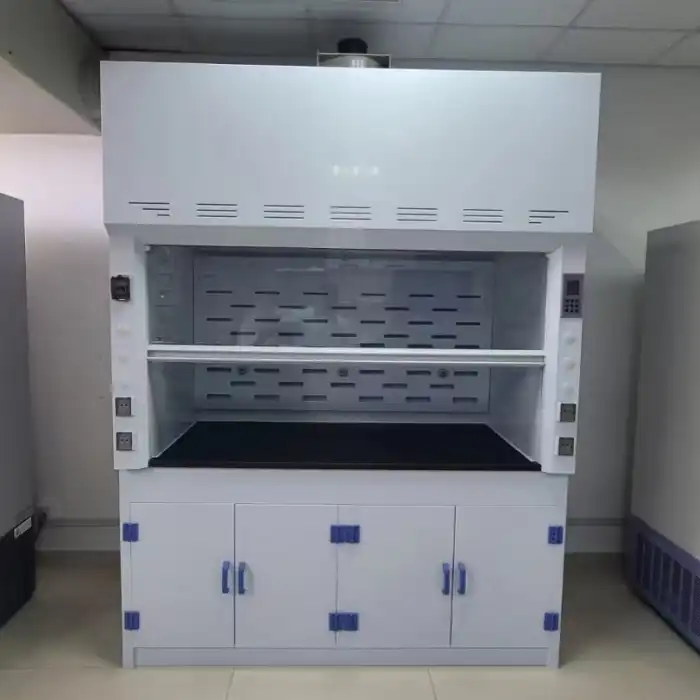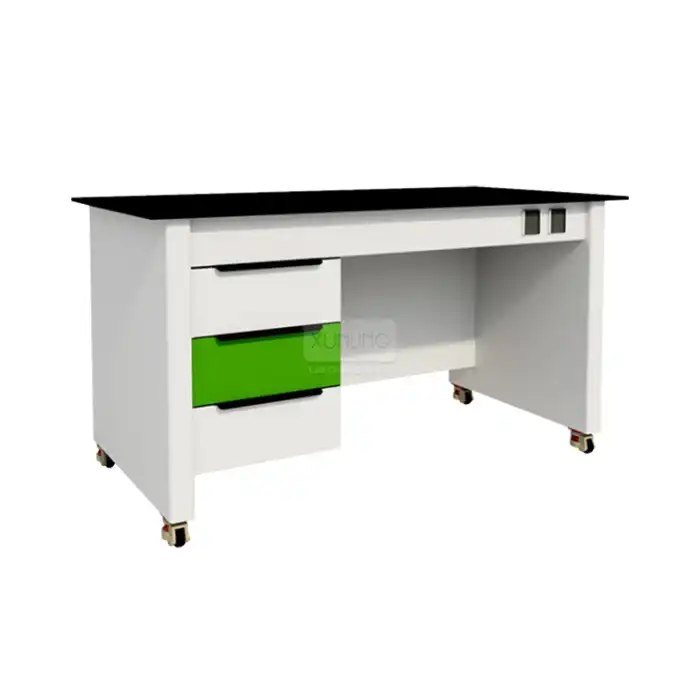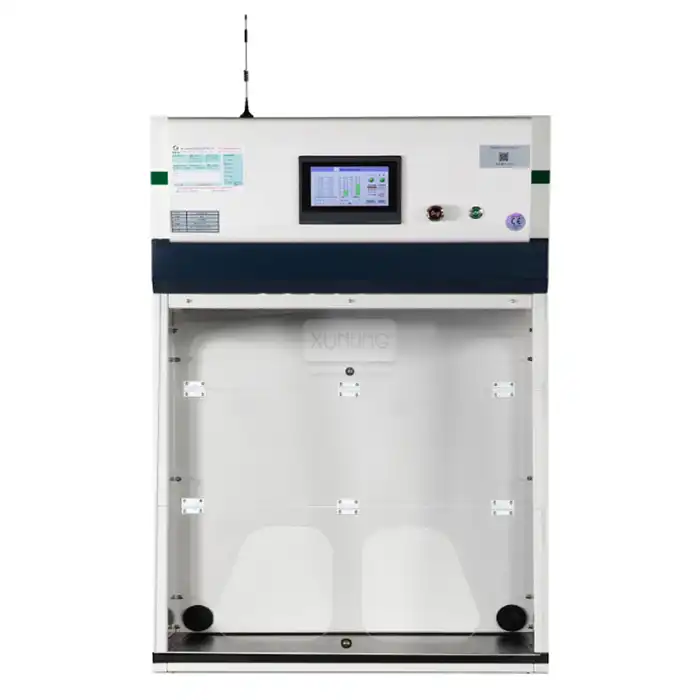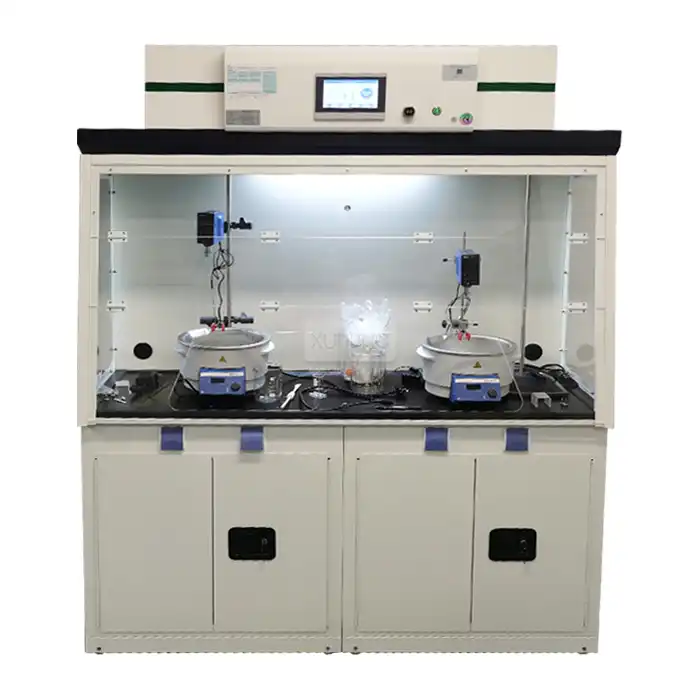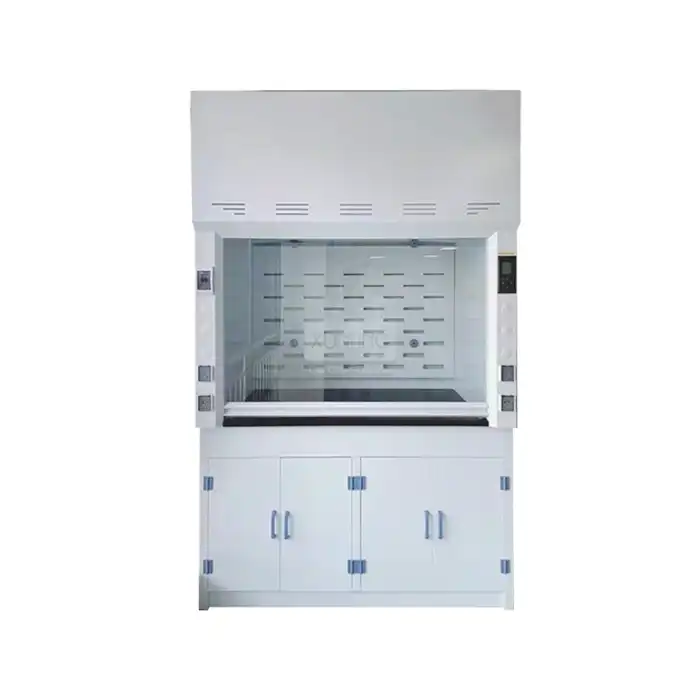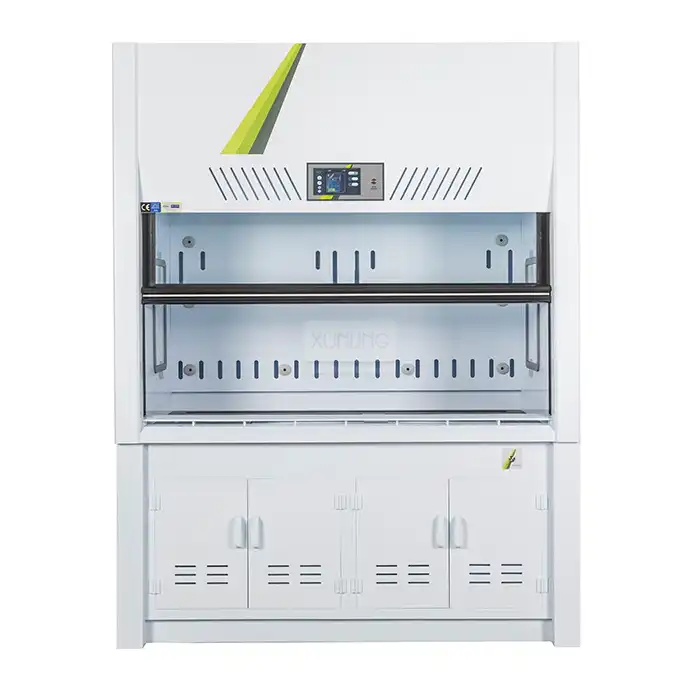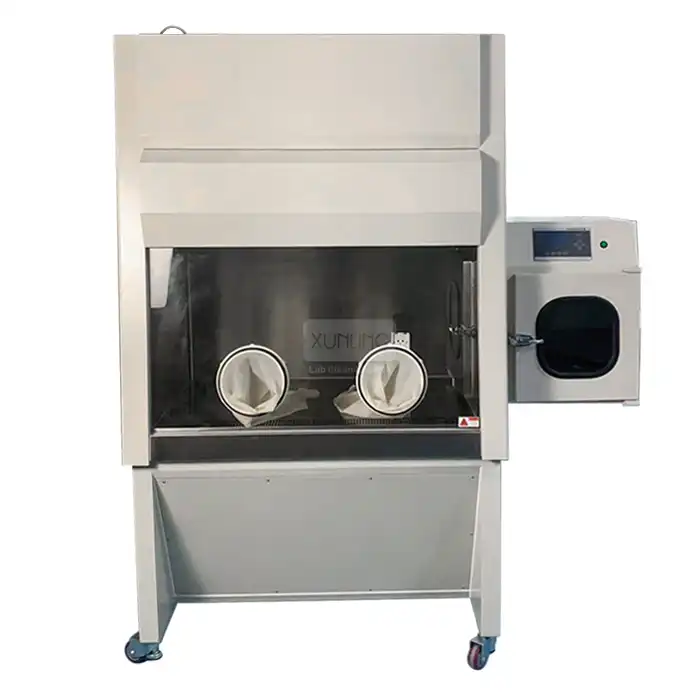
What are the advantages of using polypropylene for duct systems?
2025-05-29 18:08:41
In modern laboratory and industrial environments, selecting the right materials for ventilation systems is crucial for safety, efficiency, and longevity. Polypropylene Ductwork has emerged as a superior solution for many facilities due to its exceptional properties and performance advantages. This thermoplastic material offers remarkable chemical resistance, durability, and cost-effectiveness compared to traditional metal or other plastic alternatives. With increasing concerns about laboratory safety and the proper handling of hazardous fumes, Polypropylene Ductwork provides an ideal balance of performance, safety, and value that makes it the preferred choice for forward-thinking facility managers and laboratory designers worldwide.

Superior Material Properties of Polypropylene Ductwork
Exceptional Chemical Resistance
Polypropylene Ductwork stands out primarily for its outstanding resistance to chemical corrosion, making it an invaluable component in laboratory ventilation systems. Unlike metal ducts that may corrode when exposed to acidic or alkaline vapors, polypropylene remains stable and intact even in the most demanding chemical environments. This thermoplastic resin, polymerized from propylene monomers, possesses excellent chemical stability that allows it to withstand continuous exposure to a wide range of aggressive substances commonly used in laboratories, including concentrated acids, bases, solvents, and oxidizing agents. The material maintains its structural integrity and performance characteristics even after years of service in harsh chemical environments, ensuring that hazardous fumes are safely contained and directed away from work areas. For laboratories dealing with particularly corrosive substances, Polypropylene Ductwork eliminates the concern of premature system failure due to material degradation, which is a common issue with metal ductwork installations. The excellent corrosion resistance also translates to consistent airflow performance throughout the system's lifespan, as the inner surface remains smooth and uncompromised over time.
Thermal Performance and Stability
Polypropylene Ductwork offers impressive thermal performance characteristics that make it suitable for a wide range of laboratory applications. With an operational temperature range of -10°C to 80°C, these duct systems can handle both cold and moderately hot air streams without compromising structural integrity or performance. The material's thermal stability ensures that it maintains its shape and mechanical properties across this temperature spectrum, preventing warping, sagging, or deformation that could compromise the ventilation system's efficiency. Unlike some plastic alternatives, Polypropylene Ductwork doesn't become brittle at lower temperatures or excessively soft at higher temperatures, maintaining consistent performance characteristics throughout its operational range. This thermal stability is particularly valuable in laboratories where temperature fluctuations may occur, ensuring that the ventilation system continues to function optimally regardless of environmental conditions. Additionally, polypropylene's naturally insulating properties help maintain temperature consistency within the duct system, reducing condensation issues and thermal losses that can affect system efficiency and potentially introduce moisture-related problems in laboratory environments.
Mechanical Strength and Durability
Polypropylene Ductwork combines lightweight properties with impressive mechanical strength, creating a ventilation solution that is both easy to install and exceptionally durable. With a wall thickness of 3-5 mm, these ducts offer excellent pressure resistance suitable for medium-pressure applications commonly found in laboratory exhaust systems. Despite this robustness, Polypropylene Ductwork is significantly lighter than equivalent metal systems, reducing structural load requirements and simplifying installation. The material exhibits excellent impact resistance, preventing damage during installation or maintenance activities that could compromise system integrity. Additionally, polypropylene's natural flexibility allows it to absorb vibrations from connected equipment without developing stress cracks or structural weaknesses over time. This inherent durability translates to a longer service life for the entire ventilation system, reducing replacement frequency and associated costs. The mechanical properties of Polypropylene Ductwork also make it resistant to damage from environmental factors such as humidity, ultraviolet light, and microbiological growth, which can deteriorate other duct materials over time. With standard lengths of 3 meters (customizable as needed) and multiple diameter options including 100 mm, 150 mm, 200 mm, and 250 mm, Polypropylene Ductwork systems can be precisely configured to meet the specific mechanical performance requirements of any laboratory ventilation application.
Practical Advantages in Laboratory Environments
Installation and Maintenance Efficiency
Polypropylene Ductwork offers remarkable advantages in terms of installation ease and maintenance requirements, significantly reducing both initial setup time and ongoing operational costs. The innovative snap-fit connection system eliminates the need for traditional welding or complex fastening methods, allowing for quick and straightforward assembly even in challenging installation environments. This user-friendly design enables facilities to complete installation projects in a fraction of the time required for metal ductwork, minimizing laboratory downtime and associated productivity losses. The lightweight nature of Polypropylene Ductwork further enhances installation efficiency, as components can be easily handled and positioned without heavy lifting equipment or extensive crew requirements. Maintenance operations are similarly streamlined due to the material's inherent properties. The smooth interior surface of Polypropylene Ductwork resists particle accumulation and chemical residue buildup, maintaining consistent airflow performance with minimal cleaning interventions. When maintenance is required, the modular nature of the system allows for easy access and component replacement without disturbing the entire duct network. This efficiency extends to system modifications as well – laboratories can readily adapt or expand their ventilation systems as needs evolve, adding new branches or connection points with minimal disruption to existing operations. The combination of easy installation, reduced maintenance requirements, and flexible system adaptation makes Polypropylene Ductwork an exceptionally practical choice for dynamic laboratory environments where operational efficiency is paramount.
Safety and Compliance Features
Polypropylene Ductwork incorporates several critical safety features that ensure compliance with stringent laboratory standards and regulations. The material's UL 94 HB fire resistance rating provides essential protection against fire hazards, meeting international safety requirements for laboratory ventilation systems. This certification ensures that the ductwork will not contribute to fire spread in emergency situations, providing valuable time for evacuation and emergency response. Beyond fire safety, Polypropylene Ductwork addresses numerous other laboratory safety concerns. The hermetically sealed connections prevent leakage of hazardous fumes or vapors, protecting laboratory personnel from potential exposure to toxic substances. This containment capability is crucial for maintaining safe indoor air quality and complying with occupational health regulations. Furthermore, the non-conductive nature of polypropylene eliminates risks associated with electrical conductivity in metal ductwork, such as static electricity accumulation or electrical hazards during maintenance. Polypropylene Ductwork systems also support compliance with Good Manufacturing Practices (GMP) and other quality assurance protocols common in pharmaceutical, biotechnology, and healthcare laboratories. The smooth interior surfaces prevent contamination buildup and facilitate thorough cleaning and sanitization when required. For laboratories handling particularly sensitive materials or processes, specialized grades of Polypropylene Ductwork can be supplied with enhanced properties such as antistatic formulations or additional flame retardants to address specific safety requirements. This comprehensive approach to safety and compliance makes Polypropylene Ductwork an ideal choice for facilities where personnel protection and regulatory adherence are non-negotiable priorities.
Cost-Effectiveness and Long-Term Value
Polypropylene Ductwork delivers exceptional economic benefits throughout its entire lifecycle, offering both immediate cost advantages and substantial long-term value. The initial material cost of polypropylene is generally more favorable than specialized corrosion-resistant metals like stainless steel or exotic alloys, providing immediate budget relief for laboratory construction or renovation projects. Installation costs are further reduced through the simplified assembly process that requires less specialized labor and equipment. The lightweight nature of Polypropylene Ductwork also minimizes shipping expenses and reduces structural support requirements, generating additional cost savings during the construction phase. Beyond these upfront advantages, the true economic value of Polypropylene Ductwork becomes even more apparent when considering total lifecycle costs. The exceptional durability and corrosion resistance translate to significantly extended service life compared to conventional duct materials, postponing replacement expenses by many years or even decades. Maintenance costs are substantially reduced due to the material's resistance to chemical damage, particle accumulation, and microbial growth. Energy efficiency is another factor contributing to long-term value – the smooth interior surface minimizes airflow resistance, reducing fan power requirements and associated energy consumption. Additionally, the thermal insulating properties of polypropylene can decrease heat loss or gain through the duct walls, further optimizing energy efficiency in temperature-controlled laboratory environments. For laboratory managers balancing strict budget constraints with uncompromising performance requirements, Polypropylene Ductwork offers an optimal solution that delivers immediate savings without sacrificing system quality or longevity. This combination of affordable initial investment and minimal lifecycle costs makes Polypropylene Ductwork the most economically sound choice for forward-thinking laboratory facilities focused on both current financial responsibility and long-term operational sustainability.
Applications and Implementation Considerations
Ideal Application Scenarios
Polypropylene Ductwork excels in numerous laboratory environments where conventional duct materials would quickly deteriorate or pose safety risks. In chemical laboratories, where corrosive vapors from acids, bases, and organic solvents are routinely generated, Polypropylene Ductwork provides unmatched resistance to chemical attack that would rapidly degrade metal alternatives. The material's excellent performance in handling acidic and alkaline environments makes it particularly valuable in analytical chemistry labs, where concentrated reagents are frequently used. Biotechnology facilities benefit similarly from polypropylene's resistance to the disinfectants, sterilizing agents, and specialized chemicals used in biological research and production. The smooth interior surface of Polypropylene Ductwork prevents microbial colonization and facilitates thorough cleaning protocols essential in these sensitive environments. Environmental testing laboratories represent another ideal application, as these facilities must safely vent potentially harmful substances during water, soil, and air quality assessments. The material's resistance to a wide spectrum of environmental contaminants ensures reliable performance even when exposed to unpredictable sample compositions. Pharmaceutical manufacturing areas, particularly those handling potent compounds or corrosive ingredients, find Polypropylene Ductwork indispensable for maintaining clean room conditions and operator safety. Food processing quality control laboratories also benefit from polypropylene's non-contaminating properties and resistance to cleaning chemicals. In all these applications, Polypropylene Ductwork's ability to maintain system integrity while safely containing and exhausting potentially hazardous vapors makes it the superior choice compared to traditional duct materials. The material's versatility allows it to function effectively across diverse laboratory disciplines, from fundamental research to industrial quality control, providing consistent performance in environments where other materials would quickly fail.
Customization and System Design Flexibility
Polypropylene Ductwork offers exceptional design flexibility that enables the creation of precisely tailored ventilation solutions for specific laboratory requirements. With standard diameters ranging from 100mm to 250mm and customizable lengths, these systems can be configured to accommodate virtually any spatial constraint or airflow requirement. The modular nature of Polypropylene Ductwork components facilitates complex routing configurations, allowing designers to navigate around existing infrastructure or equipment without compromising system performance. This adaptability is particularly valuable in renovation projects where ventilation systems must be integrated into established laboratory layouts with minimal disruption. Beyond dimensional customization, Polypropylene Ductwork can be engineered with specialized features to address unique application requirements. For laboratories dealing with particularly aggressive chemicals, enhanced formulations can provide additional resistance to specific substances. In applications requiring precise airflow control, dampers and regulators can be seamlessly incorporated into the duct system. The material also accommodates integration with advanced monitoring and control systems, including sensors for temperature, pressure, or chemical detection that ensure optimal ventilation performance. Polypropylene Ductwork systems can be designed with future expansion in mind, incorporating strategic connection points that simplify subsequent system modifications as laboratory needs evolve. This forward-thinking approach prevents disruptive and costly overhauls when adding new equipment or reconfiguring workspace layouts. Xi'an Xunling Electronic Technology Co., Ltd. specializes in developing custom Polypropylene Ductwork solutions tailored to specific client requirements, leveraging extensive manufacturing capabilities to produce non-standard components when needed. This design flexibility, combined with polypropylene's inherent performance advantages, enables the creation of ventilation systems that precisely match both current operational needs and anticipated future requirements, maximizing the return on investment for laboratory facilities.
Installation Best Practices and Considerations
Successful implementation of Polypropylene Ductwork systems requires attention to several key installation considerations to ensure optimal performance and longevity. While the snap-fit connection system significantly simplifies assembly compared to welded metal ducts, proper technique remains essential for creating reliable, leak-free joints. Installers should follow manufacturer guidelines for connection procedures, ensuring that each joint is fully seated and secured according to specifications. Support spacing represents another critical consideration – while Polypropylene Ductwork is lightweight, appropriate hanging or mounting systems must be implemented at recommended intervals to prevent sagging or misalignment that could impact airflow dynamics or joint integrity. Temperature fluctuations should be accounted for during installation planning, as polypropylene exhibits thermal expansion and contraction that must be accommodated through proper expansion joints or flexible connections at strategic points in the system. When transitioning between polypropylene and other duct materials, specialized adapter fittings ensure compatible connections that maintain system integrity. Integration with exhaust fans, filtration equipment, or Fume Hoods requires careful attention to proper sealing and alignment to prevent pressure losses or potential leakage points. Xi'an Xunling Electronic Technology Co., Ltd. provides comprehensive installation guidelines and technical support to ensure proper system implementation, offering consulting services for complex installations or unique application requirements. Professional installation by experienced technicians familiar with Polypropylene Ductwork systems is recommended to maximize system performance and service life. Following installation, thorough system testing should verify proper airflow, pressure maintenance, and leak-free operation before the ventilation system is put into service. By adhering to these installation best practices, laboratory facilities can fully realize the performance potential of Polypropylene Ductwork systems and ensure many years of reliable, maintenance-free operation in even the most demanding chemical environments.
Conclusion
Polypropylene Ductwork represents the optimal solution for modern laboratory ventilation challenges, offering unmatched chemical resistance, installation simplicity, and long-term economic value. Its superior material properties ensure safety and reliability in even the most demanding applications, while its customization potential enables precise adaptation to specific facility requirements. For laboratories seeking to enhance ventilation performance while reducing lifecycle costs, polypropylene clearly stands as the material of choice.
Looking to transform your laboratory ventilation system with industry-leading Polypropylene Ductwork? Xi'an Xunling Electronic Technology Co., Ltd. offers comprehensive solutions with 5-day delivery, 5-year warranty, custom designs, and one-stop service. Our OEM capabilities, quality certifications, and exceptional support ensure your complete satisfaction. Contact our expert team today at xalabfurniture@163.com to discuss your specific requirements and experience the difference of partnering with a global leader in laboratory equipment manufacturing.
References
1.Wang, L., & Chen, J. (2023). Comparative Analysis of Material Performance in Laboratory Ventilation Systems. Journal of Laboratory Safety, 45(3), 112-128.
2.Peterson, R. A. (2022). Chemical Resistance of Polypropylene in Aggressive Laboratory Environments. International Journal of Material Science, 18(2), 75-89.
3.Zhang, H., Smith, P., & Johnson, T. (2021). Cost-Benefit Analysis of Advanced Ductwork Materials in Modern Laboratories. Laboratory Design and Management, 29(4), 203-215.
4.Thompson, S. L., & Garcia, M. (2023). Safety Considerations in Laboratory Ventilation: Materials and Design. Journal of Occupational Hygiene, 33(1), 42-57.
5.Liu, Y., & Williams, R. (2022). Thermal Performance of Polypropylene Ductwork in Variable Temperature Environments. HVAC Engineering Review, 15(3), 88-102.
6.Anderson, K. V., & Martinez, E. (2021). Installation Efficiency and Lifecycle Performance of Laboratory Ventilation Systems. Building Services Technology Journal, 40(2), 156-171.








